Pugs: A bundle of love wrapped in a wrinkled coat.
The Pug is a breed of small, sturdy, compact dogs known for their distinctive wrinkled face and curled tail. Originating from China, they were bred as companion dogs for the ruling families. Pugs are characterized by their charming, loving, and mischievous personality.
They have a glossy, short coat that comes in a variety of colors, most commonly fawn or black. Despite their small size, Pugs are quite robust and are known for their strong will and spirited character. They are also recognized for their sociability, making them popular pets worldwide.
Quick Facts About Pugs
- Country of Origin: China
- Breed Classification: Toy group
- Size: Small
- Physical Characteristics: Compact, square body; distinctive wrinkled face with a short-muzzled nose; large, expressive eyes
- Lifespan: 13-15 years
- Average Cost: Initially $600-$1,500; ongoing costs for potential health issues
- Allergenic Properties: Not hypoallergenic
- Compatibility with Children and Other Pets: Good with children and other pets, very sociable
- Health: Prone to brachycephalic syndrome, obesity, and can have issues with eyes and skin folds
- Trainability: Fairly trainable but can be stubborn; responds best to patient, gentle training
- Grooming Needs: Moderate; requires regular cleaning of facial wrinkles and bathing
- Exercise Requirements: Low; needs short walks and indoor play, sensitive to extreme temperatures
Unveiling the History of the Pug Dog Breed
 Unveiling the history of the Pug dog breed is like opening a treasure chest of fascinating tales, royal intrigues, and adorable snorts. These small, wrinkly-faced dogs with their big, soulful eyes have been charming humans for centuries, and their story is as captivating as their distinctive looks.
Unveiling the history of the Pug dog breed is like opening a treasure chest of fascinating tales, royal intrigues, and adorable snorts. These small, wrinkly-faced dogs with their big, soulful eyes have been charming humans for centuries, and their story is as captivating as their distinctive looks.
Our journey begins in ancient China, where the Pug’s ancestors were the pampered pets of emperors. These dogs were so revered that they had their own guards, and some were even given ranks in the imperial court. Talk about a dog’s life! The Chinese believed that the unique wrinkles on a Pug’s face formed Chinese characters, and the more characters, the more valuable the dog. The most prized of all was the character for “prince”. So, if you’ve ever thought your Pug acted like royalty, now you know why!
From China, the Pug’s popularity spread to other parts of Asia. Buddhist monks in Tibet kept these dogs as pets in their monasteries, presumably for their companionship and their ability to make anyone laugh with their goofy antics.
The Pug’s journey then took a dramatic turn in the 16th century when Dutch traders brought these dogs back to Europe. The Pug quickly became the darlings of the Dutch royal court. The breed’s popularity skyrocketed when a Pug named Pompey reportedly saved the life of William, Prince of Orange, by alerting him to an assassination attempt. Pompey’s heroics earned Pugs a place in the Dutch royal coat of arms. Not bad for a breed that’s often mistaken for a loaf of bread!
The Pug’s fame continued to spread across Europe. They became the official dog of the House of Stuart in Scotland, and even played a role in the history of the English monarchy. When William III and Mary II ascended to the throne, they brought their Pugs with them, introducing the breed to England. Queen Victoria, a dog lover, had a particular fondness for Pugs, which helped to further popularize the breed.
In the 19th century, the Pug hopped across the pond to America and was one of the first breeds recognized by the American Kennel Club. Since then, the Pug’s popularity has only grown. Today, they’re one of the most recognized and beloved dog breeds in the world.

Throughout their history, Pugs have been known for their distinctive looks and charming personalities. They’re small but sturdy, with a compact, muscular body and a face that’s a delightful mix of wrinkles and expressions. Their large, round eyes are full of life and intelligence, and their curled tail is a signature feature.
But it’s their personality that truly sets Pugs apart. They’re known for their playful, outgoing nature and their love of people. They’re also incredibly adaptable, equally happy living in a city apartment or a country home. And let’s not forget their sense of humor. A Pug is always ready to make you laugh with a funny face or a silly antic.
So there you have it, the illustrious history of the Pug dog breed. From Chinese emperors to Dutch royalty, from Buddhist monasteries to the American Kennel Club, Pugs have charmed their way into hearts around the world. And with their lovable personalities and comedic flair, it’s easy to see why. After all, who can resist a face like that?
Fascinating Facts about the Pug Dog Breed
 y
y
If you’re a fan of dogs with squished faces, curly tails, and a personality that’s larger than life, then you’re probably already familiar with the Pug dog breed. These little bundles of joy are known for their distinctive looks and their playful, loving nature. But there’s more to the Pug than meets the eye. So, buckle up, because we’re about to embark on a journey through some fascinating facts about this adorable breed.
First off, let’s talk about their history. Pugs are not just any ordinary dogs; they’re royal dogs. Originating from China, these dogs were the prized possessions of Chinese emperors. They lived in luxurious accommodations, sometimes even guarded by soldiers. Talk about living the high life! From China, they made their way to Europe in the 16th century, where they continued to be pampered by the nobility. Queen Victoria herself was a big fan of these dogs. So, if you own a Pug, you’re in royal company.
Now, let’s move on to their unique physical features. Pugs are instantly recognizable with their wrinkled, short-muzzled face and curled tail. But did you know that their wrinkles have a purpose? The wrinkles were actually bred into the dog to spell out the Chinese character for “prince” in their forehead wrinkles. So, not only are they royal, but they also wear their title on their face!
Another fun fact about Pugs is their tail. If you’ve ever noticed, a Pug’s tail curls up towards its back. The tighter the curl, the better, according to breed standards. Some Pugs even have double curls! It’s like having a built-in accessory that’s always in style.
Now, let’s delve into their personality. Pugs are known for their friendly and sociable nature. They’re like the life of the party in the dog world. They love to show off, make people laugh, and are known to be a bit of a clown. But don’t let their playful nature fool you. Pugs are also incredibly loyal to their families. They’re like tiny, four-legged bodyguards who will protect their loved ones with all their might.
But perhaps the most endearing thing about Pugs is their love for sleep. These dogs are champion sleepers. On average, a Pug sleeps for about 14 hours a day! That’s more than half the day spent in dreamland. So, if you’re a couch potato, a Pug would make the perfect companion for those lazy Sunday afternoons.
Lastly, let’s talk about their name. The term ‘Pug’ is believed to have derived from the Latin word ‘Pugnus,’ which means fist. This is probably because the dog’s face resembles a clenched fist. But whether they look like a fist or not, one thing’s for sure: Pugs pack a punch when it comes to winning people’s hearts.
In conclusion, Pugs are more than just cute dogs with squished faces. They’re a breed with a rich history, unique physical features, and a personality that’s hard to resist. So, the next time you see a Pug, remember, you’re not just looking at a dog; you’re looking at a tiny, four-legged piece of history that’s as fascinating as it is adorable.
Understanding the Unique Appearance of Pugs
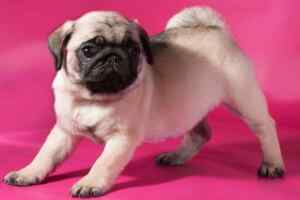
Pugs, those adorable little creatures with squished faces and big, round eyes, are a breed that is impossible to ignore. They are the clowns of the canine world, with a sense of humor that is as distinctive as their unique appearance. But what exactly makes a pug look like a pug? Let’s delve into the fascinating world of pug aesthetics.
First and foremost, the pug’s face is its most defining feature. It’s as if someone took a regular dog face, put it in a vice, and squished it. The result is a flat, wrinkled face that looks like it ran into a wall at full speed. This is due to a genetic trait known as brachycephaly, which gives them their distinctive short-nosed appearance. Their large, round eyes bulge out of their heads, giving them a perpetually surprised look. It’s as if they’ve just been told they’re going for a walk, every single moment of their lives.
Next, let’s talk about those wrinkles. Pugs have more wrinkles than a linen shirt left in the dryer too long. These folds and creases, particularly the deep one on their forehead known as the “prince mark,” are a signature characteristic of the breed. Legend has it that the wrinkles on a pug’s face were valued in ancient China because they formed the characters for the word “prince” in Chinese. Whether that’s true or not, one thing is certain: these wrinkles need regular cleaning to prevent skin infections. So, owning a pug might just improve your laundry skills!
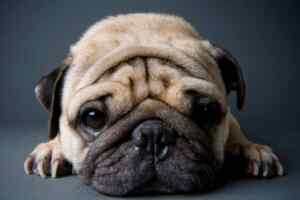
Moving on from the face, we come to the pug’s body. Pugs are like the bodybuilders of the dog world – small, but muscular. They have a compact, square body with well-developed muscles, and a level of fitness that is surprising given their love for lounging around. Their short, glossy coat comes in a variety of colors, including fawn, black, apricot, and silver, making each pug a unique work of art.
And then there’s the tail. Oh, the pug’s tail! It’s like a little cinnamon roll perched on their backside. This tightly curled tail is another distinctive feature of the breed. The curl of the tail is so important that it’s included in the breed standard – a double curl is considered perfection. It’s like the cherry on top of the sundae that is a pug.
Finally, we can’t forget about the pug’s personality, which shines through in their appearance. Pugs are known for their friendly and loving nature. They have a strong desire to please and are often described as ‘shadow dogs’ because they like to stick close to their owners. This, combined with their expressive faces, makes them excellent at communicating with their humans. A tilt of the head, a wag of the tail, a wrinkle of the brow – each is a pug’s way of saying, “I love you, now can we please go for a walk?”
In conclusion, the pug’s unique appearance, from their squished face to their muscular body and curly tail, is a big part of their charm. They are a breed that is full of character and love, and their distinctive looks are just the icing on the cake. So, the next time you see a pug, take a moment to appreciate their unique beauty. And maybe give them a belly rub – they love those.
Exploring the Personality and Intelligence of Pugs
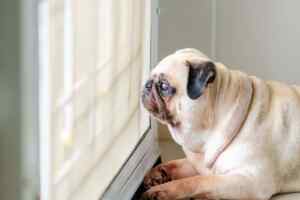
Pugs, those adorable little dogs with the squished faces and big, soulful eyes, are a breed that’s hard to resist. They’re like the comedians of the canine world, always ready to entertain with their goofy antics and expressive faces. But don’t let their clownish demeanor fool you. Beneath that wrinkled brow lies a brain that’s always ticking, always ready to outsmart their human companions in the pursuit of treats and belly rubs.
Pugs are known for their friendly and sociable nature. They’re like the life of the party, always ready to mingle and make new friends. They’re the kind of dogs that will happily greet your guests at the door, tail wagging and tongue lolling, ready to bestow slobbery kisses on anyone who’ll let them. They’re also incredibly loyal and affectionate, making them excellent companions for both individuals and families. They’re the kind of dogs that will follow you around the house, always wanting to be part of whatever you’re doing, whether it’s cooking dinner or watching TV.
But while they’re friendly and sociable, pugs are also known for their stubborn streak. They’re like the toddlers of the dog world, always wanting to have their way and throwing adorable little tantrums when they don’t get it. This stubbornness can make them a bit challenging to train. But don’t worry, it’s not impossible. With a bit of patience, consistency, and a whole lot of treats, you can teach your pug to follow basic commands and even perform some tricks.
Now, let’s talk about intelligence. Pugs may not be the Einsteins of the dog world, but they’re certainly not dumb. They’re actually quite clever, in their own unique way. They’re excellent problem solvers, especially when it comes to figuring out how to get to the treats that you’ve hidden away. They’re also quite good at reading human emotions and will often adjust their behavior to match your mood. If you’re feeling down, they’ll be there to offer comfort with their warm presence and gentle licks. If you’re feeling happy, they’ll be there to share in your joy, bouncing around and wagging their tail.
However, their intelligence also means that they can be a bit manipulative. They’re masters at using their adorable faces and expressive eyes to get what they want. They’ll give you that look, the one that says “I’m so cute, how can you resist giving me a treat?” And more often than not, you’ll find yourself giving in to their demands.
Pugs are a breed that’s full of personality and intelligence. They’re friendly, sociable, stubborn, clever, and a bit manipulative. But despite their quirks, or perhaps because of them, these small dogs are incredibly lovable and make excellent companions.
So if you’re looking for a dog that will keep you entertained with their goofy antics, offer comfort when you’re feeling down, and outsmart you in the pursuit of treats, then a pug might just be the perfect breed for you. Just be prepared for a lot of slobbery kisses and a constant shadow following you around the house.
Common Health Issues in Pugs: What Owners Should Know

Pugs, those adorable little creatures with squished faces and big, round eyes that could melt even the coldest of hearts. They’re like little bundles of joy wrapped in a layer of fur, with a ribbon of snorts and snores. But, as any seasoned pug owner will tell you, these little bundles of joy come with their own set of challenges, particularly when it comes to their health.
Now, don’t let this put you off. Owning a pug is like being in a comedy show where the main character is a small, snorting, snoring, furball. It’s a riot! But, as with any good comedy show, there are serious moments too. And for pug owners, these serious moments often revolve around their pet’s health.
Pugs, bless their little hearts, are prone to a number of health issues. It’s like they drew the short straw in the genetic lottery. But hey, what they lack in health, they make up for in personality, right?
First off, let’s talk about their eyes. Pugs have these big, beautiful eyes that are almost too big for their little faces. It’s like they’re perpetually surprised. But these big eyes are prone to a number of issues. They can easily get scratched or injured, leading to ulcers. They’re also prone to a condition called Pug Dog Encephalitis, which is as scary as it sounds. It’s an inflammation of the brain that can lead to seizures. It’s rare, but it’s something to be aware of.
Then there’s their breathing. Pugs snort and snore like it’s their job. It’s part of their charm. But this is actually due to a condition called Brachycephalic Syndrome. Basically, their airways are narrower than they should be, which can lead to breathing difficulties. It’s like they’re trying to breathe through a straw. It’s not fun for them, and it can be worrying for you.

And let’s not forget about their skin. Pugs have these adorable wrinkles that make them look like they’re perpetually worried. But these wrinkles can trap dirt and moisture, leading to skin infections. It’s like they’re carrying around their own little petri dish of bacteria.
Lastly, there’s their weight. Pugs love to eat. And who can blame them? Food is great! But their love for food, combined with their tendency to be a bit lazy, can lead to obesity. And obesity can lead to a whole host of other health issues, like diabetes and heart disease. It’s like they’re on a mission to eat their way to the vet’s office.
But don’t despair, dear pug owner. Yes, pugs have their health issues, but with proper care and regular vet check-ups, these can be managed. And let’s face it, their little quirks and health issues are part of what makes them so endearing. After all, nobody’s perfect, right? And in the end, the laughter and joy that a pug brings into your life far outweigh any health issues they may have. So, here’s to the pugs, with their squished faces, big eyes, and even bigger personalities. They may not be the healthiest of breeds, but they sure are one of the most lovable.
Essential Tips for Caring for Your Pug: Nutrition and Exercise
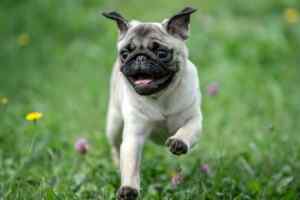
If you’re the proud owner of a pug, you’re well aware that these little bundles of joy are more than just pets; they’re part of the family. With their squishy faces, curly tails, and larger-than-life personalities, pugs are a breed that’s hard not to love. However, as with any breed, pugs require specific care to keep them healthy and happy. Two of the most important aspects of pug care are nutrition and exercise.
Now, if you’ve ever looked into the eyes of a pug, you’ll know they have a knack for making you feel like they’re perpetually on the brink of starvation. Don’t be fooled by those pleading eyes and the dramatic sighs of despair. Pugs are notorious for their love of food and their ability to pack on the pounds. This is where the importance of proper nutrition comes into play.
Pugs aren’t exactly picky eaters, but that doesn’t mean you should let them chow down on anything and everything. A balanced diet is crucial for these little guys. High-quality dog food that’s rich in protein and low in fillers is a good place to start. You might be tempted to share your dinner with your pug, but resist the urge. Human food often contains ingredients that can be harmful to dogs, not to mention it can lead to weight gain.
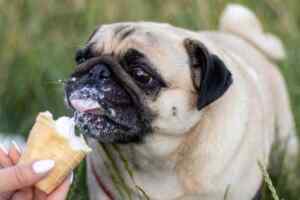
Speaking of weight gain, it’s important to monitor your pug’s weight closely. Pugs are prone to obesity, which can lead to a host of health problems, including heart disease and arthritis. Regular vet check-ups can help you keep an eye on your pug’s weight and ensure they’re staying within a healthy range.
Now, let’s talk about exercise. If you’re imagining your pug running marathons or scaling mountains, you might want to adjust your expectations. Pugs are not exactly the most athletic breed. In fact, they’re more likely to be found snoring on the couch than running laps around the park. However, that doesn’t mean they don’t need exercise.
Regular, moderate exercise is essential for keeping your pug healthy. A leisurely walk around the block or a game of fetch in the backyard can do wonders for your pug’s health. Just remember to keep an eye on your pug during exercise. Pugs are brachycephalic, which means they have short noses and can struggle with breathing, especially in hot weather. If your pug starts panting heavily or seems to be struggling, it’s time to take a break.
In conclusion, caring for a pug involves a delicate balance of proper nutrition and regular exercise. It’s all about resisting those pleading eyes at dinner time and encouraging your pug to get off the couch and move around, even if it’s just for a short walk. With the right care, your pug can lead a healthy, happy life, full of snuggles, snorts, and plenty of personality. After all, that’s what owning a pug is all about.
Effective Training Techniques for Your Pug
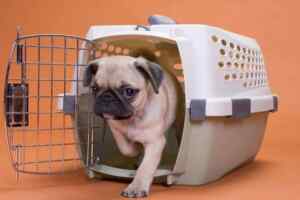
If you’re the proud owner of a Pug, you’re already well aware of their charming, mischievous, and loving nature. These little bundles of joy, with their squished faces and curly tails, are known for their playful and affectionate demeanor. However, their stubborn streak can make training a bit of a challenge. But fear not, dear Pug parent, for we have some effective training techniques that will have your Pug behaving like a Westminster champion in no time. Well, maybe not a champion, but at least a well-behaved pet.
First things first, Pugs are like tiny, furry toddlers with a short attention span. So, keep your training sessions short and sweet. A 10-minute training session is more than enough to keep your Pug engaged without overwhelming them. Remember, you’re dealing with a dog breed that would rather be snuggling on your lap or chasing its tail than learning how to sit or stay.
Now, let’s talk about motivation. Pugs are food-driven creatures. They would sell their tiny souls for a piece of bacon. So, use this to your advantage. High-quality, tasty treats are your secret weapon when it comes to training your Pug. However, given their propensity for weight gain, make sure these treats are healthy and used sparingly.
Next, consistency is key. If you want your Pug to understand and follow commands, you need to be consistent with your instructions and your reactions. If “down” means “get off the couch” one day and “lie down” the next, your Pug will be as confused as a chameleon in a bag of Skittles. Similarly, if you laugh when your Pug steals your socks but scold them when they snatch your slippers, they won’t understand what they’re doing wrong.
Patience is another crucial factor in training your Pug. Remember, Pugs are not exactly the Einsteins of the dog world. They’re more like the class clowns. They might not get things right on the first, second, or even the tenth try, but they will eventually get there. So, keep your cool and remember to celebrate the small victories.

Positive reinforcement is the best way to train your Pug. Praise them when they do something right and gently correct them when they make a mistake. Never resort to harsh punishments or negative reinforcement. Pugs are sensitive souls, and harsh treatment can lead to fear, anxiety, and even aggression.
Lastly, socialization is an important part of your Pug’s training. Pugs are social butterflies, and they love meeting new people and dogs. Regular social interactions will help your Pug learn how to behave around others and prevent them from developing fear or aggression towards strangers or other dogs.
In conclusion, training your Pug might feel like trying to herd cats at times, but with patience, consistency, and a pocket full of treats, you can turn your stubborn little furball into a well-behaved companion. Remember, the goal of training is not to create a robot dog that follows commands blindly, but to build a strong bond with your Pug and ensure their safety and happiness. So, keep your training sessions fun, positive, and full of love, just like your Pug.
